Goshuin Guide: What Is It & How to Collect
A trip to Japan isn’t complete without a visit to one of its many ancient shrines or temples, which provide a glimpse into the country’s rich cultural heritage. As you navigate through these sacred places, you may encounter a unique practice that beautifully combines spirituality, calligraphy, and the joy of collection: the tradition of goshuin. Find out what it is and how to collect goshuin in our comprehensive guide.
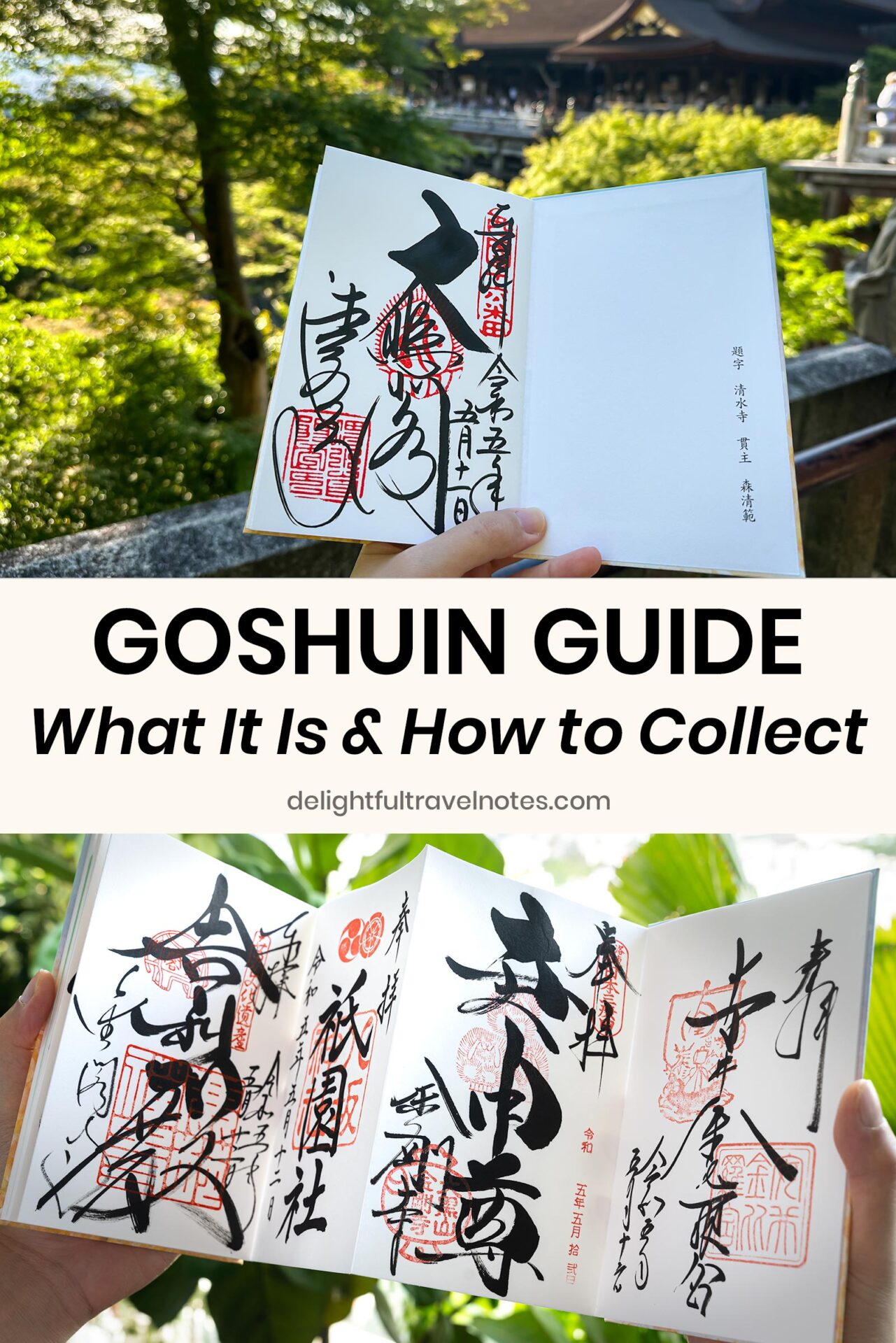
What is a Goshuin?
Goshuin (御朱印) are seal stamps given out at many Buddhist temples and Shinto shrines across Japan. Each goshuin is a unique work of art, consisting of the shrine or temple’s name in black ink calligraphy, a distinct red seal representing the location, and the date of the visit.
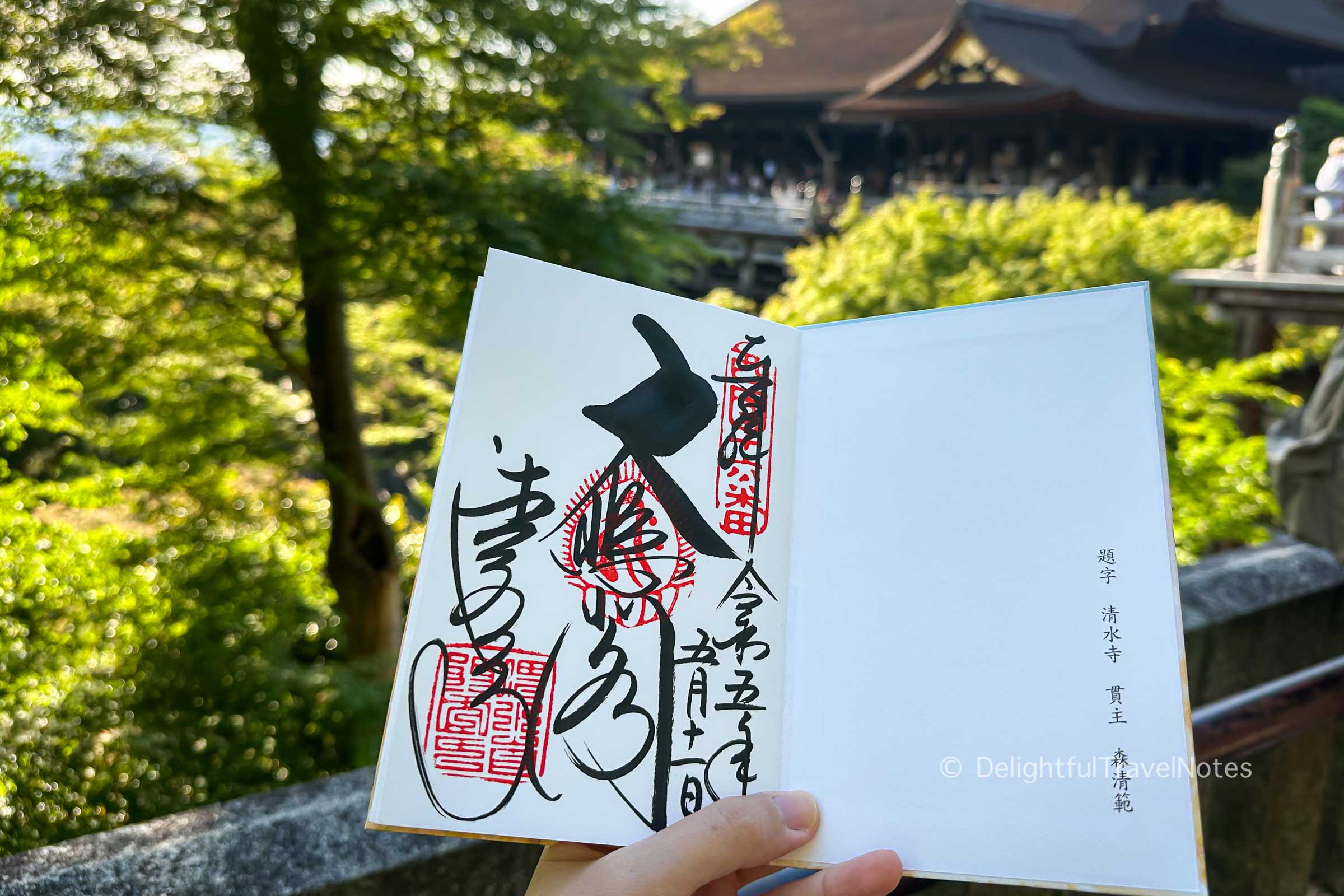
Goshuin History and Meaning
Traditionally, these temple stamps or shrine stamps were proofs of pilgrimage; they were given to show that one had visited a particular shrine or temple. Some say one could bring goshuin stamps to the afterlife as a proof of devotion.
Today, many tourists and locals alike collect goshuin for their aesthetic appeal, and as a memorable token of their visit.
What is a Goshuin-Cho?
Goshuin-cho (御朱印帳) is a special book dedicated to housing these unique goshuin stamps. It is very important to collect only temple or shrine stamps in your goshuin-cho. If you have anything other than these stamps, such as station stamps, in your goshuin-cho, you may be declined a goshuin.
Where to Buy Goshuin-Cho
You can purchase it at most temples and shrines; each place often has their own specific designs for goshuin-cho. Depending on the design, the cost of one book can range from 1,500 to 3,000 yen.
Purchasing your first goshuin-cho from a shrine or temple you particularly like or feel connected to, can be a meaningful start to your goshuin collection. My first book was from Kiyomizu-dera in Kyoto (the one on the left below). Many temples and shrines sell goshuin-cho with their own designs, such as Byoudo-in, Sumiyoshi Taisha and Hokoku Shrine.

You may also find goshuin-cho at stationery stores and department stores. For instance, I bought another book at Hyakudan Kaidan in Tokyo after visiting their gallery (the one on the right in the photo above). I have a separate post about visiting Hyakudan Kaidan, a lesser-known cultural and architectural landmark in Tokyo.
Why Collect Goshuin?
As mentioned previously, it is said that goshuin was traditionally collected as a proof that one had visited a particular shrine or temple. I started collecting goshuin out of curiosity, thinking it would be an interesting and engaging way to connect with Japan’s religious and cultural history. It soon turned into a rewarding travel experience for me.
Each goshuin is not just a souvenir from the temple or shrine I visited. It also takes me back to the very moment it was collected: the tranquil morning filled with the rustling sound of the camphor trees at Meiji Jingu, or the rainy and quiet afternoon at Kodai-ji temple. My first goshuin-cho bought at Kiyomizu-dera is now a visual diary, a vivid reminder of the places I visited on my first trip to Japan.

Goshuin Cost
Each goshuin usually costs 300-500 yen. Half of the places I visited in Kyoto charged 300 yen, while half charged 500 yen. All the places I visited in Tokyo charged 500 yen. Special goshuin (like seasonal ones) will cost more, about 1,000-1,500 yen.
Some places, like Hakone shrine and Senso-ji, offer more than one goshuin design. You can request just one or all the goshuin designs you like. Fushimi Inari is unique in that it offers the opportunity to collect up to five goshuin, one from the main shrine and others along the trails up the mountain.
Below are the two goshuin stamps you can obtain at Senso-ji. The stamp on the left is for Kannon, the main deity of the temple. The one on the right is for Daikokuten, one of the Lucky Gods worshipped at Yogodo hall on the temple grounds.

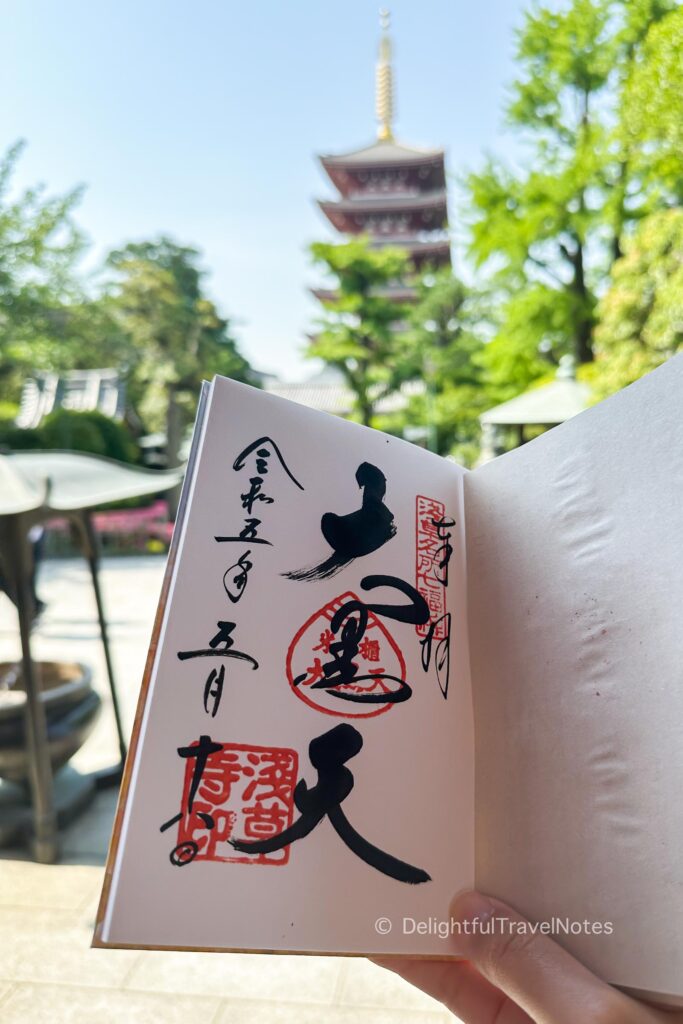
Where to Get a Goshuin
Most temples and shrines offer goshuin, often at the location where amulets are sold. It is sometimes quite easy to find. For example, you can ask for a goshuin right at the entrance booth at Hakone shrine (before climbing the stairs to the main shrine). Or at Otagi Nenbutsu-ji in Kyoto, you can request a goshuin from the same window at the entrance ticket booth.
There are also times when the place to obtain goshuin is not as obvious. For instance, the goshuin counter of Meiji Jingu is located inside the prayer hall Kaguraden. The goshuin counter of Senso-ji is also in a separate building, called Yogodo hall, off to the side of the main temple.
Most temples and shrines have signs to tell you where to get goshuin, but they are typically in Japanese. Few places have signs in English though (I can recall only Kinkaku-ji off the top of my head). Therefore, it is best to memorize how “goshuin” is written in Japanese Kanji characters (御朱印), or “goshuin-jo” (御朱印所) to find goshuin locations. Goshuin-jo means place/office to receive stamps.
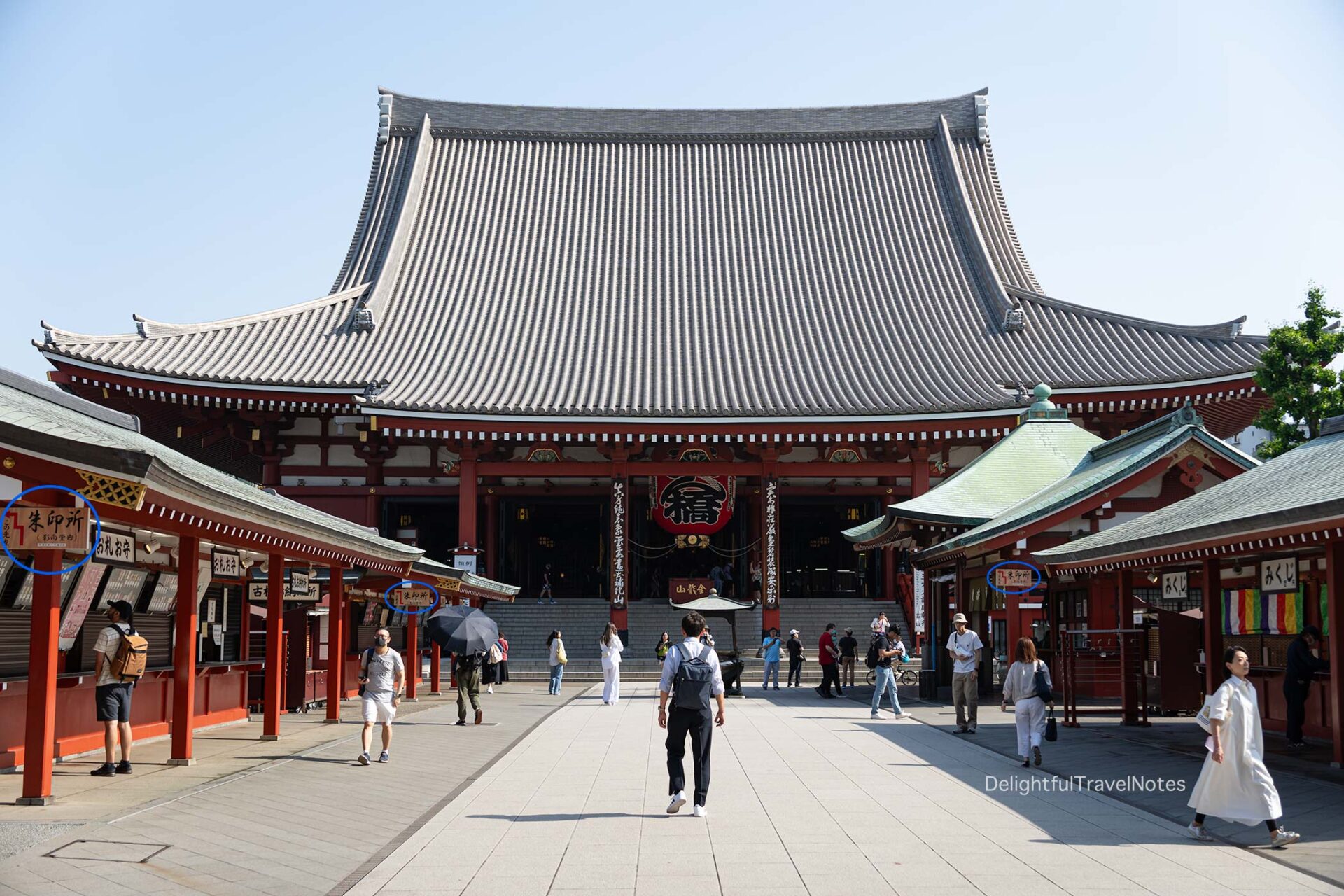
You can see three “shuin-jo” (朱印所) signs with an arrow pointing to the left that I circled in blue in the photo above. They are signs within Senso-ji temple grounds that show visitors where to get the stamp.
Goshuin Location Tips
- Most goshuin offices open from 8 am to 4 pm or 4:30 pm, so plan your visit accordingly if you want to collect goshuin.
- Some large temples and shrines provide online maps showing you where goshuin offices are located, for example, Meiji Jingu, Senso-ji, and Byoudo-in.
Written vs. Paper Goshuin
Goshuin can come in two main forms:
- Written directly into goshuin-cho by the temple staff or shrine priests
- Offered as a separate piece of paper that you can glue to your goshuin-cho later
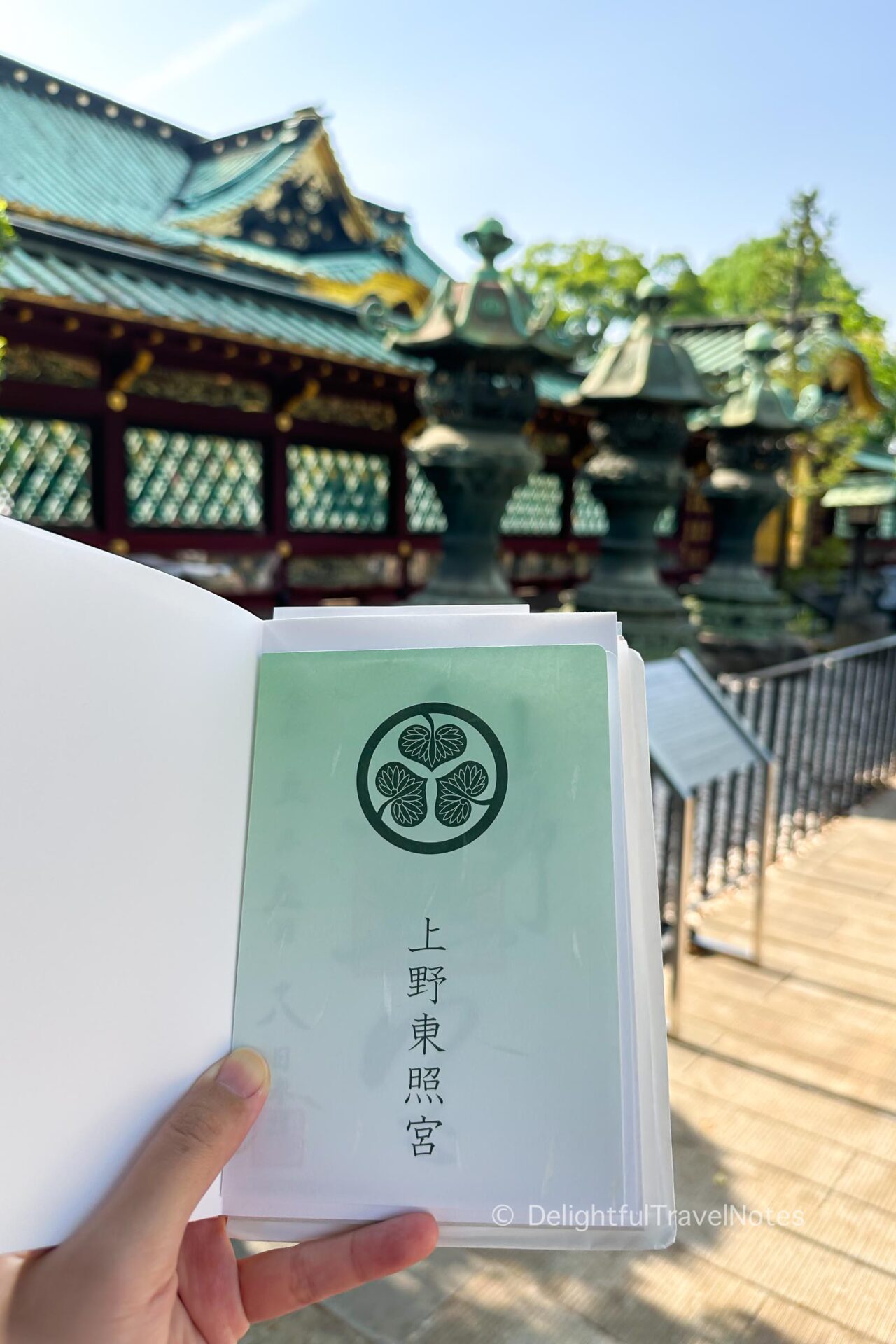
I enjoy watching the staff hand-write the calligraphy, so I do like written goshuin slightly more. Here is the list of temples and shrines I visited in 2023 and the respective type of goshuin I was given:
- Written goshuin: Kiyomizu-dera, Kinkaku-ji, Kodai-ji, Yasui Kompira-gu, Yasaka Shrine, Yasaka Koshindo temple, Otagi Nenbutsu-ji, Adashino Nenbutsu-ji, Hakone Shrine, Senso-ji
- Separate paper goshuin: Fushimi Inari, Meiji Jingu (the priest still hand-wrote the date), Ueno Toshogu shrine
- Stamped goshuin: Tenryu-ji (both the calligraphy and seal were stamped directly on my book)

Quick update in 2024: on my most recent trip, I was glad to find that all of the goshuin at the temples and shrines I visited were written directly on my book. A couple of exceptions were Nanzen-ji and Nankun-sha as I chose their special goshuin which had to be on a special type of paper. 2024 is the year of the dragon, so it seems quite a few places offer special goshuin. Please note that special goshuin will be more expensive than the regular ones, usually around 1,000 yen.
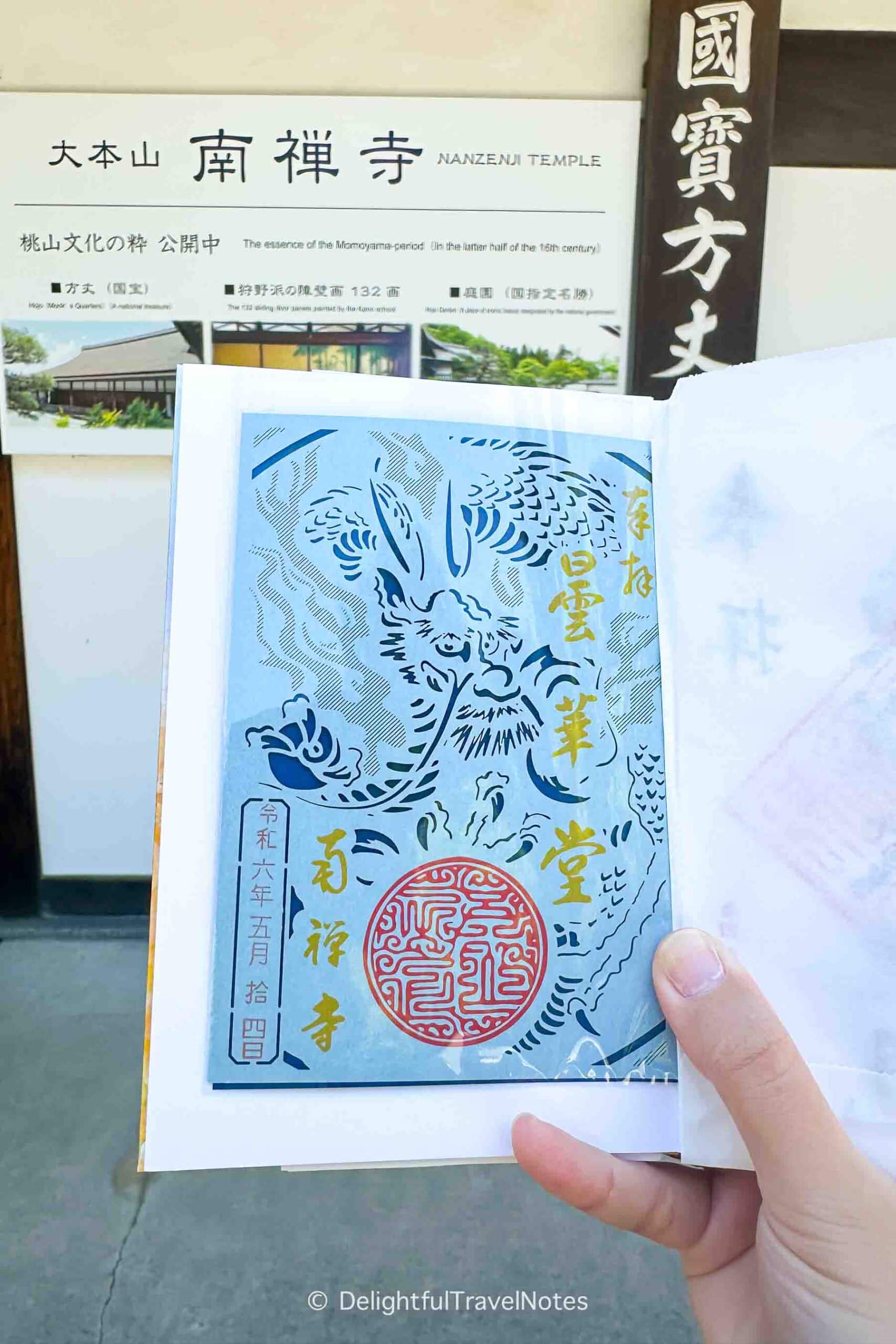
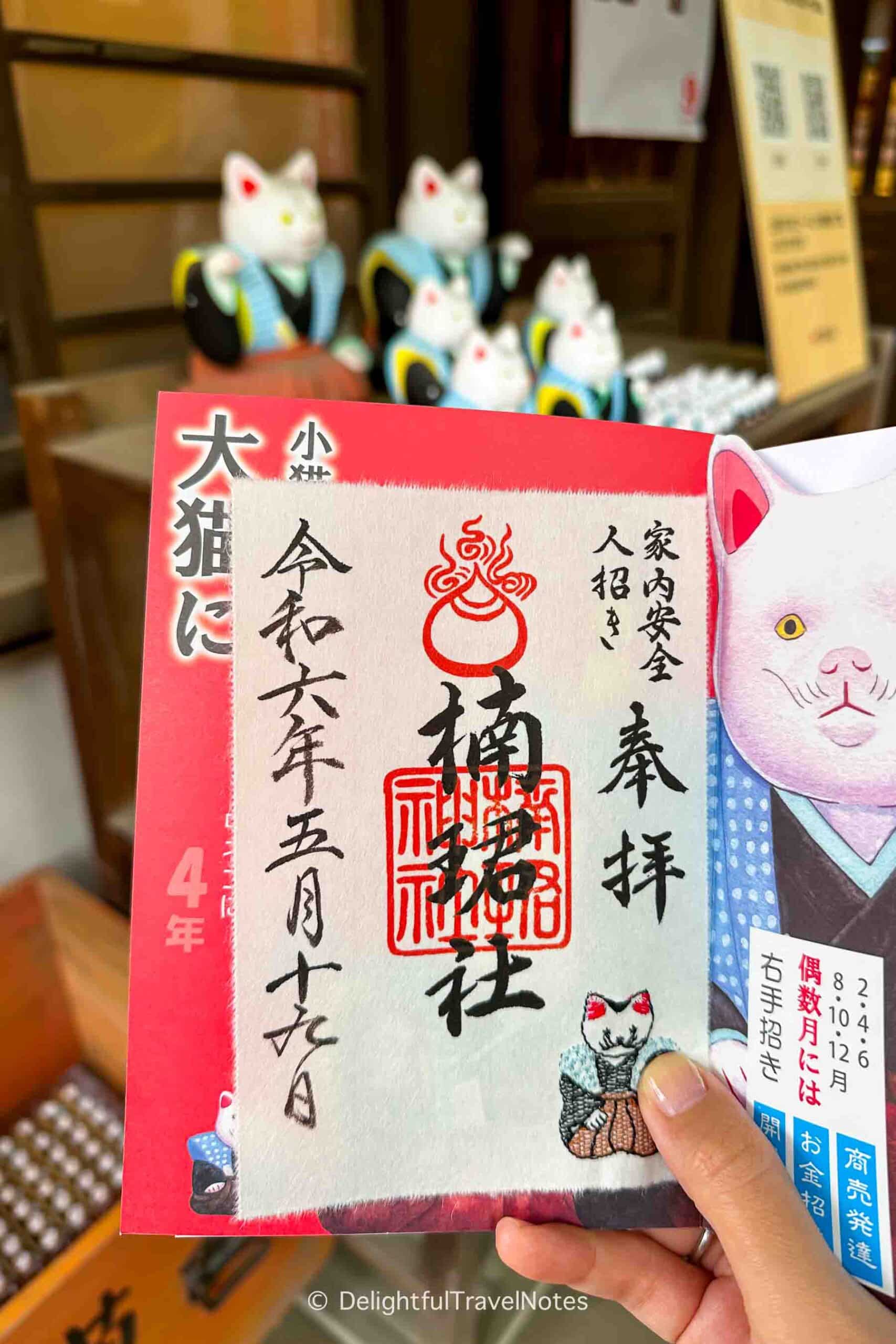
How to Ask for a Goshuin
You’re now at the right place to obtain goshuin. The next question is: “How do I ask for a goshuin?”.
Well, when I tried to collect my first goshuin at Kiyomizu-dera, I was both excited and nervous. Clutching my brand new goshuin-cho, I was unsure of the correct goshuin etiquette or the right words to use, so I just clumsily handed my book to the staff. Thankfully, my Japanese local guide assisted me with the next two goshuin, providing me a chance to observe and learn. From then on, I felt more comfortable with the process of requesting a goshuin on my own.
Below are the steps you can follow to ask for a goshuin. These steps are not official rules or procedures, just what worked for me.
- Pray at the main shrine/temple first, if you can, before heading to the goshuin office. The primary purpose of visiting should be to pay respect and appreciate the landscape and architecture, not to collect goshuin.
- At the goshuin counter, greet the staff with either “Ohayou gozaimasu” (Good morning) or “Konnichiwa” (Hello/Good afternoon).
- Ask for the goshuin by saying “Goshuin o onegai shimasu” (Please give me a goshuin) while handing staff your goshuin-cho with the correct page opened.
- I always opened my book to the blank page I’d like the goshuin to be written on and showed the page to the staff, saying “Koko desu” (Here, on this page please) (it’s not a must to say this though).
- Hand over the money (often 300 or 500 yen) to the staff.
- The staff will tell you to wait there a bit, or sometimes give you a number to come back and pick up the book later, or give you the goshuin paper.
- When receiving your goshuin-cho back, say “Arigatou gozaimasu” (Thank you) and bow slightly.
I found that most staff at goshuin counters could speak and understand some English, so overall, it’s not difficult to obtain a goshuin even for beginners.
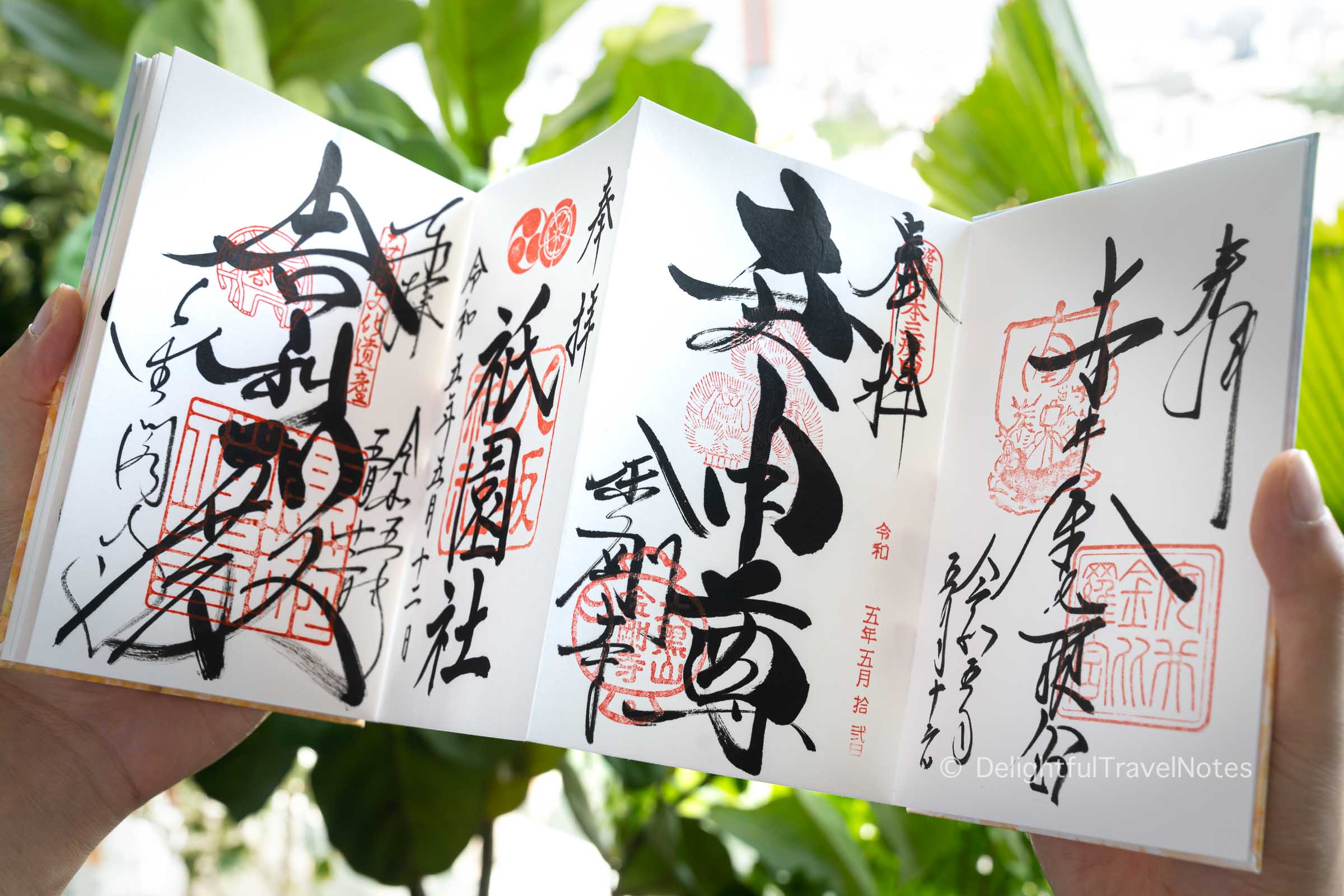
Other Goshuin Etiquette and Tips
Here are more tips for collecting goshuin:
- Be respectful while on the grounds of temples and shrines and follow the general Japanese temple and shrine etiquette.
- Also be respectful, patient and remain quiet while observing the staff prepare the goshuin.
- Since my Japanese is not good enough to read all the information on a goshuin, I liked to take a photo of it against the backdrop of the respective shrine or temple. This helped me remember each stamp’s origin.

Overall, I can’t recommend the experience of collecting goshuin enough. It is a simple way to engage with and appreciate Japanese culture while traveling across the country. I hope you will find my goshuin collecting guide helpful, and feel free to comment and share your favorite goshuin.

Hi! Does Senso-ji sell the books as well?
Hi Elizabeth,
Yes, Senso-ji was selling the goshuin books when I was there in May. There may be a slight chance of them running out of stock, but since Senso-ji is such a famous and popular destination, I guess that risk is small.
Hi Elizabeth,
Thank you so much for your detailed writeup! I am studying everything for a trip on my own in 2024. In particular, I can’t wait to collect the goshuin stamps! You mention that your guide took you to Kennin-ji temple but it is not on your list of goshuin. I checked their website and could find no mention of the stamps. Were you able to get one?
Hi Elaine,
We went there quite early (around 8:30) and Kennin-ji visiting hours started at 10:00, so I didn’t get a goshuin from this temple. We walked around the grounds (quite large and beautiful) which almost always opened. I plan to visit Kyoto again in December, and this time I will make sure to go to Kennin-ji during their visiting hours.
I meant to say Thank you Sophie! Sorry about that! Elaine
Hello,
I have read that some temples won’t put goshuin in your book if there are stamps from shrines or vice versa. Did you run into this? I don’t want to cause any offense.
Hi Toni,
I didn’t run into this. I also asked my Japanese guide this question, and he said it generally shouldn’t be a problem for tourists. Just make sure they are all goshuin done by temples and shrines. I heard there are other types of stamps, such as station stamps, and those shouldn’t be included in the book.